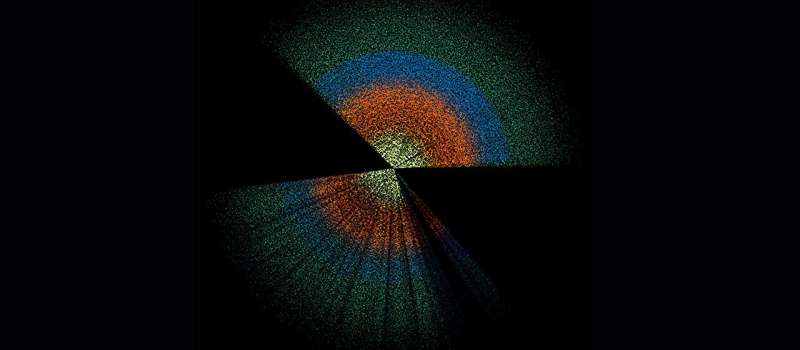Research conducted by the University of Geneva (UNIGE) suggests that dark matter behaves in a manner similar to ordinary matter, adhering to the laws of gravity. Published on November 3, 2025, in the journal Nature Communications, the findings provide new insights into the nature of dark matter, which is believed to make up approximately five times more of the universe than visible matter.
The study aimed to determine whether dark matter, which does not emit or reflect light, behaves like ordinary matter on a cosmic scale. A research team led by UNIGE explored this question by examining how dark matter interacts with gravitational wells created by massive celestial bodies. According to Camille Bonvin, an associate professor in the Department of Theoretical Physics at UNIGE, the study compared the velocities of galaxies—primarily composed of dark matter—with the depths of these gravitational wells.
Ordinary matter, including planets, stars, and galaxies, falls into gravitational wells based on established physical laws, including Einstein’s theory of general relativity. The team set out to determine if dark matter follows the same principles or if it is affected by an unknown fifth force.
Key Findings on Dark Matter Behavior
The analysis revealed that dark matter does indeed fall into gravitational wells in a manner consistent with ordinary matter, adhering to Euler’s equations. This conclusion suggests that dark matter is governed by the same gravitational forces that apply to visible matter. However, the researchers noted that their findings do not entirely rule out the possibility of an unidentified force influencing dark matter’s behavior.
Nastassia Grimm, the study’s first author and former postdoctoral researcher at UNIGE, emphasized that if a fifth force exists, it must be weaker than 7% of the strength of gravity. This limitation is crucial because if it were stronger, it would likely have already been detected in their analyses.
The implications of these findings are significant for the field of cosmology. Understanding whether dark matter is influenced by additional forces could reshape our understanding of the universe. Isaac Tutusaus, a co-author of the study, highlighted the importance of upcoming data from new experiments like LSST (Legacy Survey of Space and Time) and DESI (Dark Energy Spectroscopic Instrument). These instruments are expected to detect forces as weak as 2% of gravity, potentially offering more clarity on dark matter’s behavior.
Future Research Directions
The research marks a pivotal advancement in the characterization of dark matter. As scientists continue to investigate this enigmatic component of the universe, the quest to determine the influence of any additional forces remains a priority. The findings presented by the UNIGE team contribute to a growing body of evidence that could lead to a deeper understanding of both dark matter and the fundamental forces that govern the cosmos.
In summary, this study sheds light on the relationship between dark matter and gravity, opening pathways for future investigations aimed at unraveling the mysteries of the universe. As researchers gather more data and refine their models, the scientific community anticipates new revelations that could further illuminate the nature of dark matter and its role in the cosmos.







